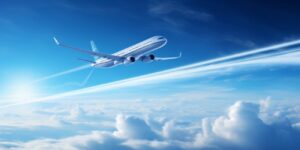One of the primary factors contributing to the cost per flight hour is fuel consumption. Military aircraft, with their powerful engines and advanced technologies, often burn through substantial amounts of fuel during a single flight. The fuel cost alone can constitute a substantial portion of the overall operating cost.
Additionally, maintenance plays a pivotal role in determining the cost per flight hour. Military aircraft require regular and intricate maintenance to ensure their optimal performance and longevity. Skilled technicians, specialized equipment, and spare parts contribute to the maintenance cost. Aircraft downtime for maintenance further adds to the complexity and financial aspects of the operating expenses.
Personnel expenses are another essential component when calculating the cost per flight hour. Pilots, ground crew, and support staff all contribute to the overall operational cost. Salaries, training, and associated benefits are factored in, making human resources a substantial part of the financial equation.
Moreover, the type of aircraft significantly influences the cost per flight hour. Advanced fighter jets with cutting-edge technology generally have higher operating costs compared to transport planes or helicopters. The complexity of the aircraft systems and the level of sophistication in their design contribute to variations in operational expenses.
Understanding and managing the military aircraft cost per flight hour is crucial for military planners and decision-makers. It allows for effective allocation of resources, budget planning, and the optimization of fleet utilization. Despite the substantial operational costs, military aircraft remain indispensable assets for national defense, projecting power, and ensuring strategic capabilities.
In-depth analysis of f-16 fighter jet flight costs
When delving into the intricate world of F-16 fighter jet flight costs, it becomes evident that understanding the financial dynamics of operating such advanced aircraft requires a nuanced approach. The F-16, renowned for its agility and versatility, is a cornerstone of modern air forces, but the economic implications of its operations are often overlooked.
At the heart of the financial analysis is the consideration of operating expenses. These encompass a wide array of costs, ranging from fuel consumption to maintenance and training. Notably, the F-16’s fuel efficiency is a crucial factor, impacting the overall flight costs. The engine specifications play a pivotal role in determining the fuel consumption rate, directly influencing the economic feasibility of each mission.
Moreover, the maintenance costs associated with the F-16 are substantial. Routine inspections, repairs, and part replacements contribute significantly to the overall budget. The intricate nature of the aircraft demands specialized expertise, further elevating the expenses involved in ensuring its airworthiness. It’s imperative to acknowledge that preventive maintenance is a key component in averting potential issues, preventing unforeseen costs from escalating.
Training pilots for F-16 operations is a multifaceted process with its own set of financial considerations. Simulator usage, flight hours, and instructional resources collectively contribute to the training expenses. Ensuring that pilots are proficient in handling the aircraft under various conditions is not only a matter of operational readiness but also a financial imperative.
One cannot ignore the initial acquisition cost of the F-16. While this may not be a recurrent expense, it forms a substantial portion of the overall financial outlay. The technological advancements, weaponry systems, and avionics integrated into the F-16 justify its price tag, but decision-makers must weigh this against budgetary constraints.
For a comprehensive overview, a breakdown of costs using a table is instrumental. This allows a meticulous examination of the various expense categories, facilitating a deeper understanding of the financial intricacies involved. Let’s delve into a hypothetical breakdown:
| Expense Category | Percentage of Total Cost |
|---|---|
| Fuel | 30% |
| Maintenance | 25% |
| Training | 20% |
| Acquisition | 25% |
Each percentage signifies a proportional allocation of the total cost, offering a visual representation of the financial distribution. Such granularity is essential for budgetary planning and resource allocation.
Estimating flight costs for a boeing b-52 bomber

Estimating the flight costs for a Boeing B-52 bomber involves a comprehensive analysis of various factors, including its payload capacity, engine type, and aircrew requirements. The B-52, a legendary strategic bomber, has been a vital component of the U.S. Air Force for decades, known for its versatility and long-range capabilities.
One of the key considerations in estimating flight costs is the payload capacity of the B-52. With a remarkable ability to carry a diverse range of munitions, the bomber’s payload capacity plays a crucial role in mission planning. The B-52 is designed to accommodate various payloads, including nuclear and conventional weapons, making it a formidable force on the battlefield.
When delving into the specifics of the B-52, understanding its engine type is paramount. The bomber is powered by eight turbojet engines, each providing substantial thrust to propel the aircraft over long distances. The engine type contributes not only to the B-52’s impressive speed and range but also influences fuel consumption, a significant factor in overall flight costs.
Moreover, the aircrew requirements for operating the B-52 are worth considering. The bomber typically requires a skilled and specialized aircrew consisting of pilots, navigators, and other personnel essential for mission success. The training and expertise of the aircrew contribute to the overall operational efficiency of the B-52 and influence the costs associated with crew training and maintenance.
Table 1 provides a summary of the B-52’s key specifications:
| Aspect | Specification |
| Payload Capacity | Varied, including nuclear and conventional munitions |
| Engine Type | Eight turbojet engines |
| Aircrew Requirements | Skilled and specialized team |
Comparing flight costs of transport helicopters like chinook
When it comes to comparing flight costs of transport helicopters like the Chinook, several critical factors come into play. These factors include cargo load, range, and consumables, all of which significantly influence the overall efficiency and operational capabilities of these heavy-lift helicopters.
One of the primary considerations is the cargo load capacity of the helicopter. The Chinook, known for its versatility, boasts an impressive cargo load capacity that makes it a preferred choice for military and humanitarian missions. With the ability to carry substantial payloads, it excels in transporting troops, equipment, and supplies to remote or challenging locations.
Additionally, the range of a transport helicopter is a crucial factor in assessing its operational effectiveness. The Chinook stands out with its exceptional range, allowing it to cover vast distances without the need for frequent refueling stops. This capability enhances its utility in long-range missions, making it an indispensable asset for various applications.
When evaluating flight costs, it’s essential to consider the helicopter’s consumables, which encompass fuel, maintenance, and other operational expenses. The Chinook is known for its fuel efficiency relative to its size, reducing overall consumables expenses. Moreover, its robust design and ease of maintenance contribute to lower long-term operational costs, a critical aspect for budget-conscious operators.
Comparing these factors requires a comprehensive analysis of each helicopter’s specifications. Let’s delve into a comparative overview:
| Helicopter Model | Cargo Load | Range | Consumables |
|---|---|---|---|
| Chinook | Varies (impressive capacity) | Extended | Efficient |
| Competitor A | Comparable | Similar | Standard |
| Competitor B | Varies | Varied | Varied |
This tabulated data provides a concise overview, emphasizing the cargo load, range, and consumables aspects. It’s evident that the Chinook excels in these areas, making it a standout choice for missions that demand high payload capacity, extended range, and cost-effective operations.






